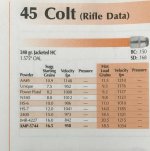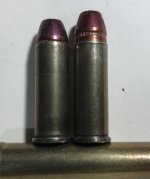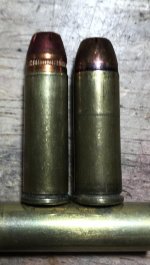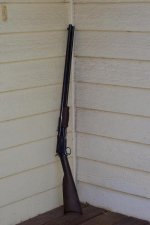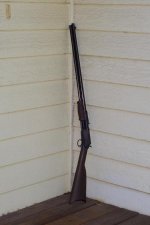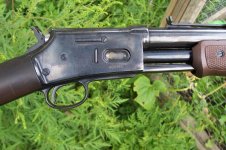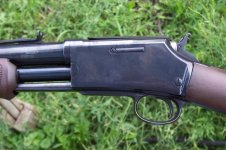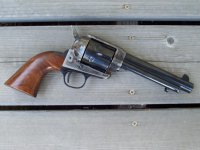glowe: My experience is somewhat different. Regardless of the powder used, I've never seen the .45 Colt cartridge to shoot dirtier than anything else when using conventionally lubed cast bullets nor do I recall rifle actions being fouled as a result . . .
I think we ended up with the same conclusions, heavy loading, heavy bullets, clean burning powder are the key for the 45 Colt Italian reproductions.
I have to say that there are a lot of calibers out there that are good for hogs and 45 Colt shot out of a lever-gun doesn't come to mind as one of them.
Sure, feral pigs are vermin, but don't deserve a slow painful death that could easily happen by using low velocity bullets with limited range and accuracy? Of all the chronograph work I have done, I cannot safely get 45 Colt toggle-action rifles much faster than 1300 fps using standard max loading tables. What bothers me is that one often reads that more people in the Old-West died from infection and lead poisoning than from the initial reaction to being shot. I would not want to be responsible for that happening to wild pigs. I do undersstand that later Winchester models (1892 & 1894) have higher pressure limits, but do not own any of those guns to test.
Finding quantative values for pressure limits of lever-guns is like pulling teeth! I have repeatedly searched for specific pressure ratings for various reproductions and all you get from the "experts" is don't shoot over the max pressures, only shoot low pressure loads, don't exceed the manufacturers pressure limits, good pressure, medium pressure, high pressure, and NO ONE will put a number with their discussions.
The best rule of thumb I have found over the years is that 'Henry, '66, and '73s are rated at 14,000PSI, which is bull because they are only using pistol data. Occasionally, someone will say these rifles are good for 20,000PSI, but without reference. Pressure numbers for the '92 and '94 rifles in 45 Colt are just as hard to find. The most popular max pressure found was 50,000PSI, but again without references or any knowledge of where the number comes from. If anyone out there has documented pressure limits, the OP and I would appreciate it.

